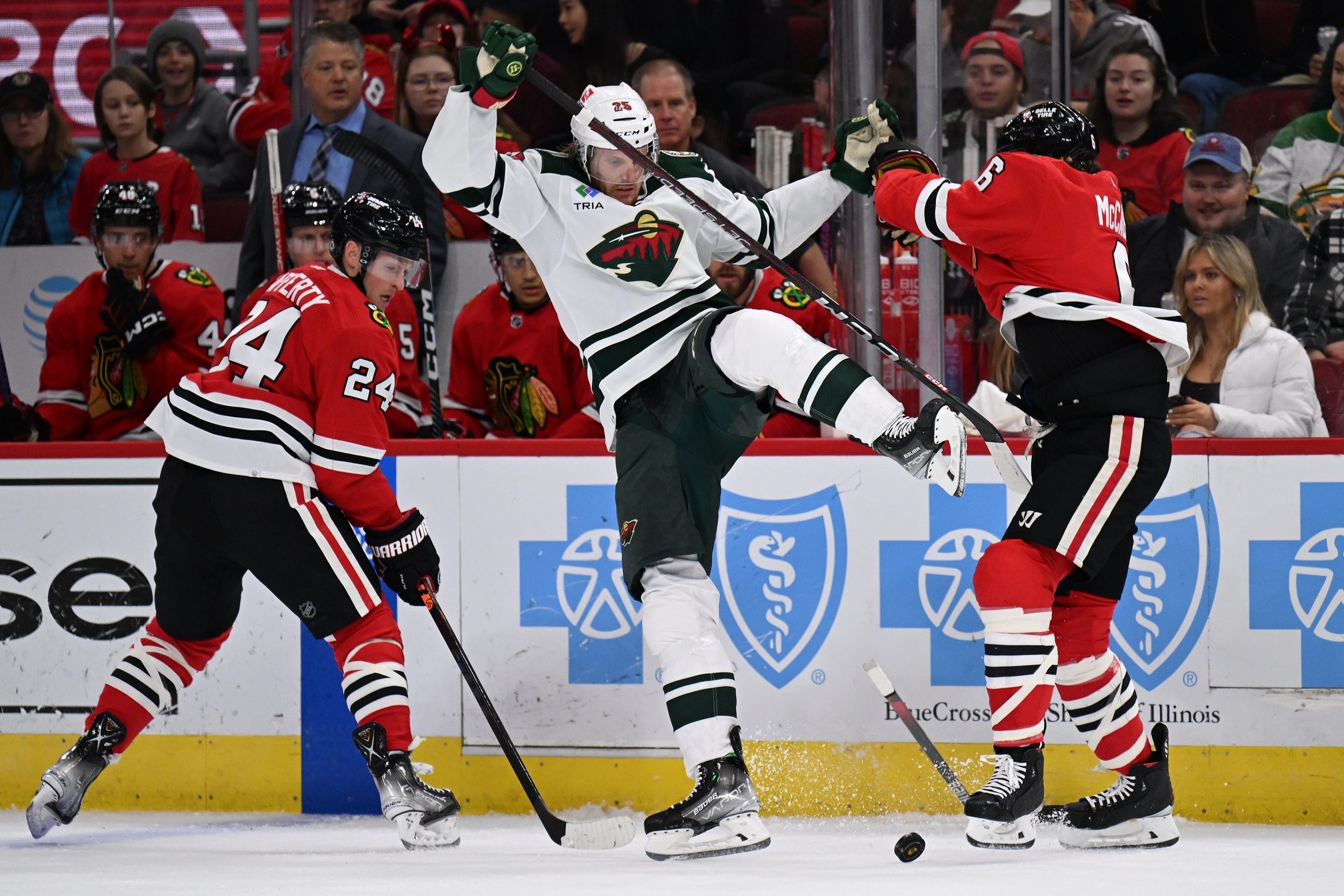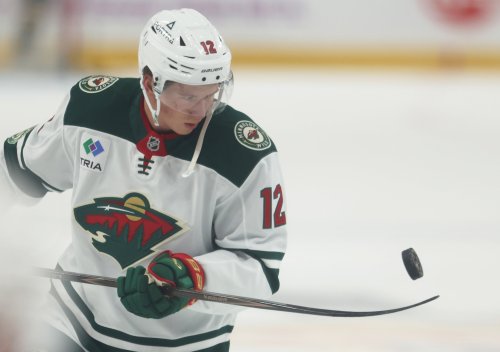
There's something off with the Minnesota Wild so far this season. They're sitting at .500, which sounds fine until you realize they have the exact same record as the Arizona Coyotes. Their 5-on-5 offense was their identity last season, but this year, it's fallen from second in the NHL to 29th.
What's the deal with that? The first instinct is to look and see who's missing from last year, which is mostly just Kevin Fiala. No doubt the Wild miss the speedy winger with game-breaking speed. But is his absence alone taking the Wild from 3.22 goals per hour to 1.98 at 5-on-5? No, not by itself.
Sure, the Wild are dealing with injuries to Marcus Foligno, Ryan Hartman, and until recently, Jordan Greenway. But it's not like the Wild didn't sustain major injuries last year, including to Foligno and Greenway. It didn't matter. Nothing was slowing down the offense train last season.
So the only thing left to point to is underperformance. We can point to depth pieces up and down the lineup not contributing, but on some level, your big guns have to lead the charge. Kirill Kaprizov, Mats Zuccarello, Matt Boldy, and Jared Spurgeon are passing the test. Look at Jonas Brodin, though, and he's not.
You could start by looking at Brodin's two points in his first 13 games after notching 30 in 73 last season. That's not what the Wild rely on him for, though. Brodin has two jobs on this team. The first is to shut down opposing forwards. Once he's done with that, the next is to use his superior skating to get the puck moving up the ice.
Usually, he's the ideal modern mobile defensive defenseman. He uses his mobility to guide even superstar talents to the outside, scoop up pucks, and get the puck out of the defensive zone. The central premise of analytically-driven hockey is, you can't score if you don't have the puck. But with Brodin, you're not scoring even if you do have it.
Usually, anyway. 195 defensemen have played 100-plus 5-on-5 minutes this season. Brodin has allowed 3.05 goals per hour, tied for 137th in the league. Or, to put it another way, the 30th percentile. We can chalk some of that up to bad goaltending, as the goalies behind him have stopped just 89.9% of pucks at 5-on-5, but it goes deeper than that.
[caption id=attachment_138024" align="alignnone" width="2764] Courtesy of Hockey Viz[/caption]
Courtesy of Hockey Viz[/caption]
Compare where the shots are coming against Brodin from last year to this year. Last season, there was a sea of blue surrounding the net, with minimal action in the slot. Look at this season, and you'll still see some blue on his side of the net. It might look similar, but you see shots coming at the net front to Marc-Andre Fleury's right. You see some heat coming from the high slot. Dangerous shots are creeping in.
Why's that? Watching the games, it seems that Brodin just isn't the same reliable escape artist he normally is with the puck.
This doesn't get picked up by a stat sheet. Fortunately, Corey Sznajder of All Three Zones makes his living watching for and tracking this data. In 581 minutes last season, Sznajder tracks Brodin as successfully exiting the defensive zone on 91.4% of his attempts last season.
Those are strong numbers that match where we understand Brodin's skills to lie. He's going to be efficient with the puck and skate it out of danger for 20-plus minutes a night.
Sznajder has only tracked four Wild games this year, but those games are concerning, nonetheless. In 64 minutes, Brodin has only exited the zone successfully on 75% of his attempts. What's worse, he's not retrieving the puck in the defensive zone and starting breakouts, either.
Last season, he retrieved about 20 pucks per hour, with around half of those leading to zone exits. This season, those numbers have dropped to around 15 retrievals per hour, with barely more than a third of those resulting in an exit.
Again, this is a pretty short sample, but in watching games, you see this startling lack of efficiency in Brodin's game. That leads to more time in the defensive zone and more opportunities for opponents, and it's showing in Brodin's stats.
The worst season he's ever had in allowing expected goals at 5-on-5 was 2017-18, when he allowed a still-elite 2.08 expected goals per hour. This season? It's 2.47. That's still solid in the big picture, but it's actually sixth on the team, with only Alex Goligoski performing worse.
Now, Brodin takes tougher minutes than the rest of the Wild, but the same was true last year. He's supposed to take those minutes. That's his job and his value to the Wild. This team can't afford to see him do anything less than thrive in his role.
The Wild have built their foundation on their blueline. Spurgeon is one of the best defensemen of the past decade, and having him on the ice for over 20 minutes a night is incredibly valuable. Even more so when you can rotate Spurgeon with Brodin for another 20 minutes. The duo ensures that for over two-thirds of the game, there's an elite defenseman moving the puck up ice and shutting down chances.
Why aren't the Wild succeeding like last year? There are all kinds of theories, and most of them probably have some truth to them. But make no mistake, until Brodin can regain his escapability and start pushing the puck north, you'll see the Wild continue to be out-of-synch on a nightly basis. He's the player Minnesota most desperately needs to rebound to get the team back on track.
All stats via Evolving Hockey unless otherwise noted.
Think you could write a story like this? Hockey Wilderness wants you to develop your voice, find an audience, and we'll pay you to do it. Just fill out this form.








Recommended Comments
There are no comments to display.
Join the conversation
You can post now and register later. If you have an account, sign in now to post with your account.
Note: Your post will require moderator approval before it will be visible.